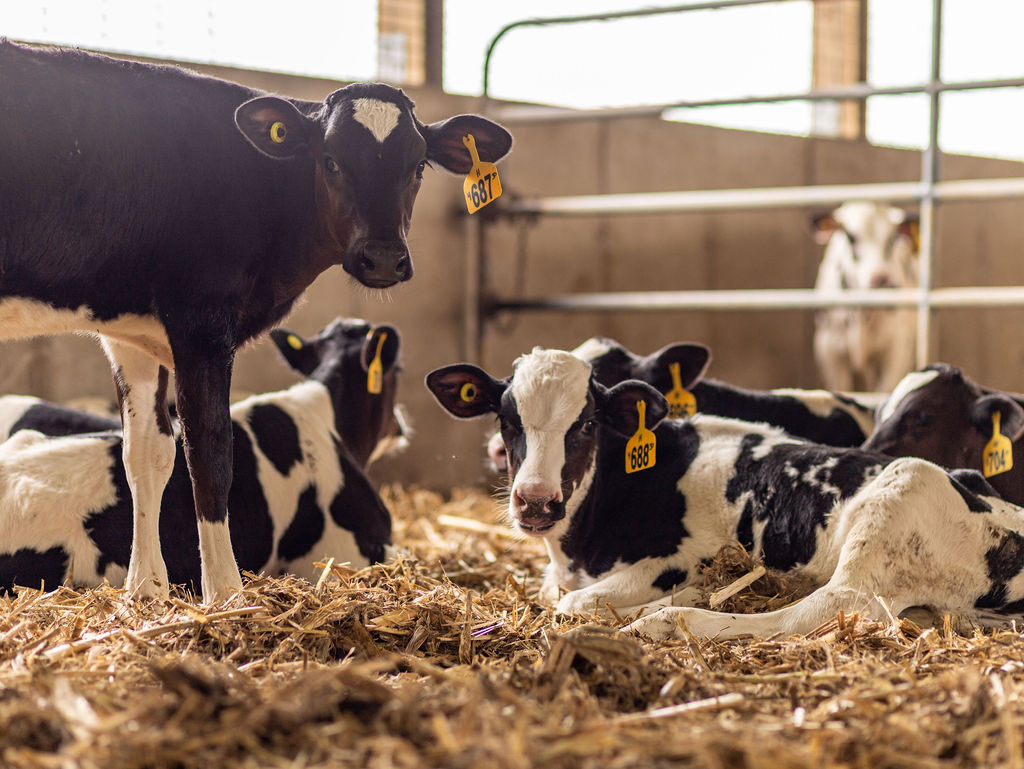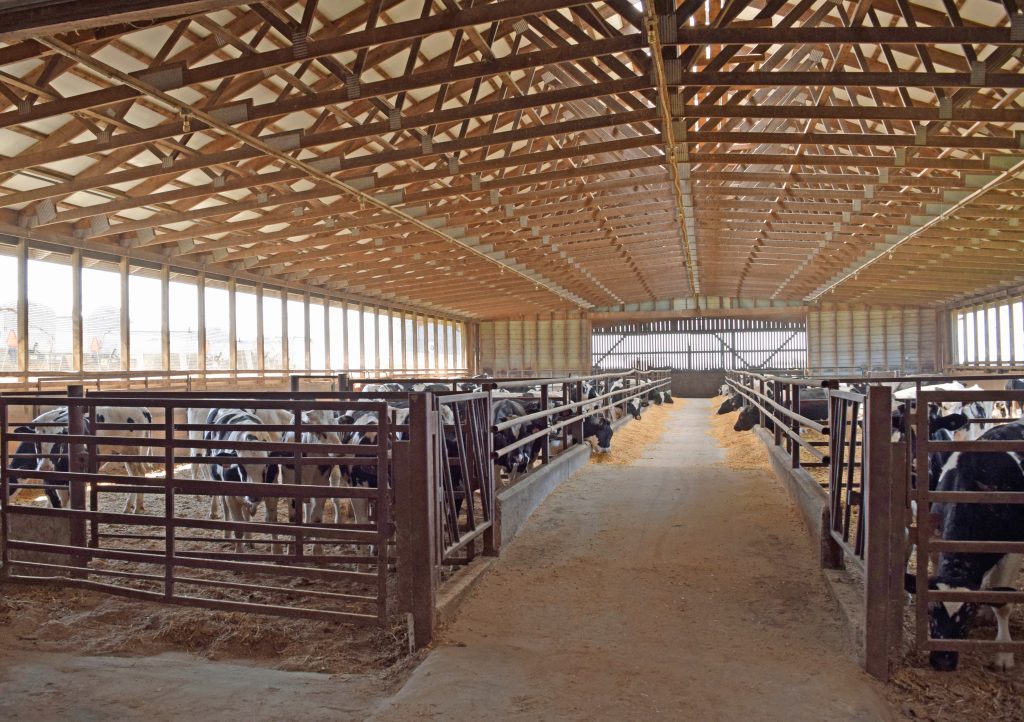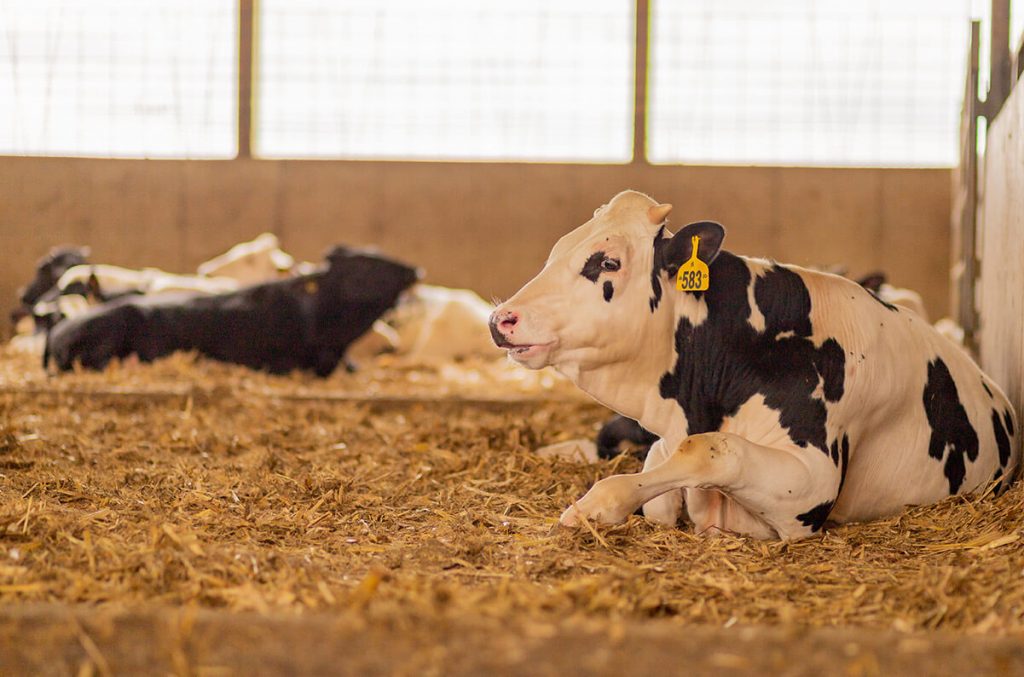Veal is the meat of male dairy animals. A dairy cow must have a calf in order to produce milk. Female calves, called heifers, are raised to have their own calves and produce milk themselves when they are mature. Male calves, called bulls, are not able to produce milk, so they are raised for meat instead, similar to beef cattle.
Raising veal cattle is one way farmers contribute to sustainable food production and a circular food economy – making sure everything that is produced has a purpose.


